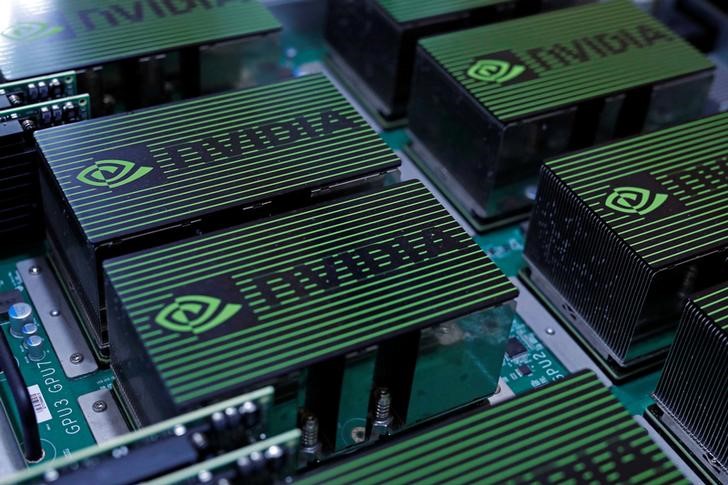DENVER –NVIDIA (NASDAQ:) today announced advancements to Universal Scene Description (OpenUSD) aimed at broadening its use beyond the creative industries to fields including robotics, industrial design and engineering. Built on the NVIDIA Omniverse platform, these enhancements are designed to facilitate the creation of accurate virtual worlds and digital twins, essential for the next generation of AI and robotics.
New services include NVIDIA NIM microservices that leverage the OpenUSD language to streamline digital twin development. These microservices can generate OpenUSD Python code, apply materials to 3D objects, and understand 3D space and physics. Additionally, NVIDIA introduced USD connectors for robotics and industrial simulation data formats, and developer tools for streaming datasets to Apple (NASDAQ:) Vision Pro.
Rev Lebaredian, vice president of Omniverse and Simulation Technologies at NVIDIA, highlighted the expansion of the digital world into various industries, noting that NVIDIA NIM microservices will democratize the development of virtual factories and other applications.
The world’s first generative AI models for OpenUSD developed by NVIDIA will be available as NVIDIA NIM microservices. These models are designed to help developers incorporate generative AI into USD workflows, with the potential to transform how we interact with the 3D world across new industry sectors.
Foxconn and WPP (LON:) are early adopters of NVIDIA’s computing platform and NIM microservices, with Foxconn creating digital twins of factories under development and WPP implementing USD Search and USD Code NIM microservices into its AI-enabled content creation pipeline for clients such as The Coca-Cola Company (NYSE:).
The collaboration between NVIDIA and Siemens aims to integrate the OpenUSD pipeline with Siemens’ Simcenter simulation technology to enhance decision-making and collaboration, which is expected to provide deeper insight into product performance in real-world environments.
To further the growth of the OpenUSD ecosystem, NVIDIA announced the OpenUSD Exchange Software Development Kit, which enables developers to create their own OpenUSD data connectors.
The USD Search, USD Code and USD Validate NIM microservices are currently available as preview in the NVIDIA API catalog, and developers can access new tools and reference workflows for integrating generative AI into their OpenUSD workflows via the Omniverse platform.
This expansion of OpenUSD capabilities, according to NVIDIA’s press release statement, reflects the company’s ongoing efforts to evolve 3D data exchange frameworks across various industries.
In other recent news, NVIDIA announced new tools to accelerate the development of humanoid robots, including NIM microservices and OSMO cloud orchestration services. Now available through the NVIDIA Humanoid Robot Developer Program, these tools aim to significantly shorten development cycle times.
Meanwhile, Taiwan’s second-quarter economic growth, despite the slowdown, was largely supported by a surge in artificial intelligence (AI) technology exports, with Taiwan Semiconductor Manufacturing Co. (TSMC) playing a key role. Analyst Kevin Wang highlighted the strong momentum of AI-related products.
In China, industrial profits rose 3.6% in June, accelerating from a 0.7% increase in May, despite broader economic challenges. Notably, NVIDIA suppliers Zhongji Innolight and Suzhou TFC Optical Communication are expecting strong revenue growth due to the global expansion of AI technology.
Finally, there was a significant sell-off on Wall Street, which particularly affected tech stocks. However, Keith Lerner, co-chief investment officer at Truist Advisory Services, maintains a positive long-term outlook for tech stocks, suggesting that the secular bull market trend is sustained. These are recent developments in the tech industry.
InvestingPro Insights
Given NVIDIA’s recent Universal Scene Description (OpenUSD) advancements and the expansion of its Omniverse platform, investors may be particularly interested in the company’s financial and market performance.
According to real-time data from InvestingPro, NVIDIA (NVDA) has shown impressive revenue growth over the past 12 months, increasing by 208.27% as of Q1 2025. This growth points to the company’s strong market position and ability to capitalize on emerging technologies.
Another notable metric is NVIDIA’s high P/E ratio of 64.66, which indicates investors have high expectations for the company’s future profitability and may reflect confidence in NVIDIA’s strategic initiatives, such as expanding its OpenUSD capabilities. Additionally, the company’s price-to-book ratio of 55.8 highlights that the company’s stock may be trading at a premium due to its solid growth prospects and strong market position as a major player in the semiconductor and semiconductor equipment industry.
InvestingPro’s tip on NVIDIA also highlights that the company has maintained dividend payments for 13 consecutive years, which may be a sign of financial stability and a commitment to returning value to shareholders. Additionally, NVIDIA’s share price movements have been highly volatile, which may be of interest to investors looking for dynamic trading opportunities.
For a deeper look into NVIDIA’s financial position and market performance, you can find more InvestingPro tips at Investing.com/pro/NVDA. These tips include insights into the company’s profitability, debt levels and valuation multiples. To access these insights and more, use coupon code PRONEWS24 to save up to 10% on annual Pro and annual or biennial Pro+ subscriptions. There are now 20 more InvestingPro tips on NVIDIA that provide a more comprehensive understanding of the company’s investment profile.
This article was created with the help of AI and reviewed by an editor. For details, see our Terms of Use.

